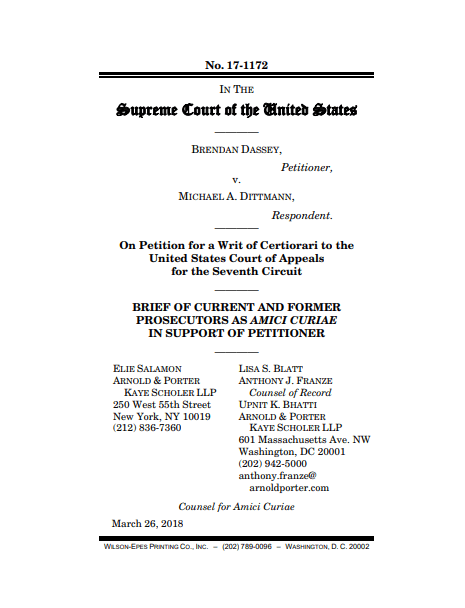
Summary of Argument
“People who are innocent don’t confess.” So said the State’s attorney to the jury that sentenced sixteenyear-old, intellectually-disabled Brendan Dassey to life in prison. Dist. Ct. Dkt. 19-23, at 144:13 (closing argument). But as every experienced prosecutor knows, sometimes innocent people do confess. And because of their age and mental development, children are particularly susceptible to falsely confessing. That is why this Court has long held that juveniles need to be treated with special care, and that courts must evaluate their confessions in light of their age and intelligence.
Unfortunately, in the workaday of the criminal justice system, that message has been lost in the lower courts, which have often failed to adequately account for the age and mental deficits of juveniles who confess to crimes. The proof is in the numerous DNA and other exonerations of wrongly convicted adolescents who lost their childhoods after courts found their false confessions to be voluntary and reliable.
The present case presents a particularly egregious and high-profile example of the problem. The state courts gave only glancing consideration of petitioner’s young age and low IQ in the face of multiple interrogations over forty-eight hours—interrogations in which two investigators asked “questions to which the police furnished the answers,” promised that petitioner’s responses would “set him free,” and engaged in “games of ‘20 Questions,’ in which Brendan Dassey guessed over and over again before he landed on the ‘correct’ story.” App. 40a, 46a (Wood, C.J., dissenting).
The interrogations of Dassey aptly illustrate one of the core reasons why courts must be ever vigilant in evaluating confessions by juveniles: the often toxic interaction of standard police interrogation techniques with minors’ unique vulnerabilities. While a leading law enforcement association has proposed best practices for interrogating juveniles, most jurisdictions employ one-size-fits-all interrogation techniques for adults and juveniles alike. But techniques that can effectively produce voluntary and reliable confessions for an average adult can have devastating, unintended consequences when applied to kids.
Here, those standard techniques led a learningdisabled sixteen-year-old to believe that he would be free to return to his sixth period class at school after he confessed to rape, murder, and mutilation of a corpse—a confession starkly at odds with the physical evidence. When Dassey’s mother later asked him how he came up with details in the confession, he said, “I guessed.” Chided by his mother, “You don’t guess with something like this, Brendan,” Dassey replied, “Well, that’s what I do with my homework.” Dist. Ct. Dkt. 19-46. The awkwardly silent, intellectually and socially vulnerable teenager with no past prior criminal record told his mom: “They got to my head.” App. 503a.
Review is needed to revitalize a critical check on convictions secured through these interrogation techniques on our most vulnerable citizens. Doing so will have the ancillary effect of helping deter coerced and unreliable confessions on the front end by encouraging law enforcement to adopt juvenile interrogation best practices. The result will be fewer innocent kids getting locked up, and fewer guilty individuals free to victimize again.
Finally, amici submit that review of this particular case is needed to restore the public’s confidence in the justice system. Millions of Americans watched the video of Dassey’s interrogations in the award-winning documentary Making a Murderer, prompting a public outcry over the obvious failure of the system. The dissenters in the closely divided 4-3 decision below likewise found that the interrogation video “speaks for itself,” and decried this case a “travesty of justice,” App. 40a, 67a (Wood, C.J., dissenting), and “a profound miscarriage of justice,” id. at 70a (Rovner, J., dissenting).
This Court has long recognized that “to perform its high function in the best way ‘justice must satisfy the appearance of justice.’” In re Murchison, 349 U.S. 133, 136 (1955) (citation omitted). Only this Court can restore the appearance—and reality—of justice here.